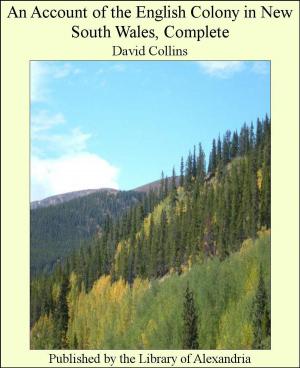| Author: | William Henry Giles Kingston | ISBN: | 9781465596123 |
| Publisher: | Library of Alexandria | Publication: | March 8, 2015 |
| Imprint: | Language: | English |
| Author: | William Henry Giles Kingston |
| ISBN: | 9781465596123 |
| Publisher: | Library of Alexandria |
| Publication: | March 8, 2015 |
| Imprint: | |
| Language: | English |
It was a gloomy evening. A small group of fishermen were standing—at the end of a rough wooden pier projecting out into the water and forming the southern side of the mouth of a small river. A thick mist, which drove in across the German Ocean, obscured the sky, and prevented any object being seen beyond a few hundred fathoms from the shore, on which the dark leaden-coloured waves broke lazily in with that sullen-sounding roar which often betokens the approach of a heavy gale. On the north side of the river was a wide extent of sandy ground, where the vegetation consisted of stunted furze-bushes and salt-loving plants with leaves of a dull pale green, growing among patches of coarse grass, the roots of which assisted to keep the sand from being blown away by the fierce wintry gales which blew across it. On the right hand of the fishermen as they looked seaward, and beyond an intervening level space, rose a line of high cliffs of light clay and sand extending far to the southward, with a narrow beach at their base. Parallel with the river was a green bank, on the sides of which were perched several cottages, the materials composing them showing that they were the abodes of the hardy men who gained their livelihood on the salt deep. The palings which surrounded them, the sheds and outhouses, and even the ornaments with which they were decorated, were evidently portions of wrecks. Over the door of one might be seen the figure-head of some unfortunate vessel. An arbour, not rustic but nautical, was composed of the carved work of a Dutch galliot; indeed, the owners of few had failed to secure some portion of the numerous hapless vessels which from time to time had been driven on their treacherous coast.
It was a gloomy evening. A small group of fishermen were standing—at the end of a rough wooden pier projecting out into the water and forming the southern side of the mouth of a small river. A thick mist, which drove in across the German Ocean, obscured the sky, and prevented any object being seen beyond a few hundred fathoms from the shore, on which the dark leaden-coloured waves broke lazily in with that sullen-sounding roar which often betokens the approach of a heavy gale. On the north side of the river was a wide extent of sandy ground, where the vegetation consisted of stunted furze-bushes and salt-loving plants with leaves of a dull pale green, growing among patches of coarse grass, the roots of which assisted to keep the sand from being blown away by the fierce wintry gales which blew across it. On the right hand of the fishermen as they looked seaward, and beyond an intervening level space, rose a line of high cliffs of light clay and sand extending far to the southward, with a narrow beach at their base. Parallel with the river was a green bank, on the sides of which were perched several cottages, the materials composing them showing that they were the abodes of the hardy men who gained their livelihood on the salt deep. The palings which surrounded them, the sheds and outhouses, and even the ornaments with which they were decorated, were evidently portions of wrecks. Over the door of one might be seen the figure-head of some unfortunate vessel. An arbour, not rustic but nautical, was composed of the carved work of a Dutch galliot; indeed, the owners of few had failed to secure some portion of the numerous hapless vessels which from time to time had been driven on their treacherous coast.















